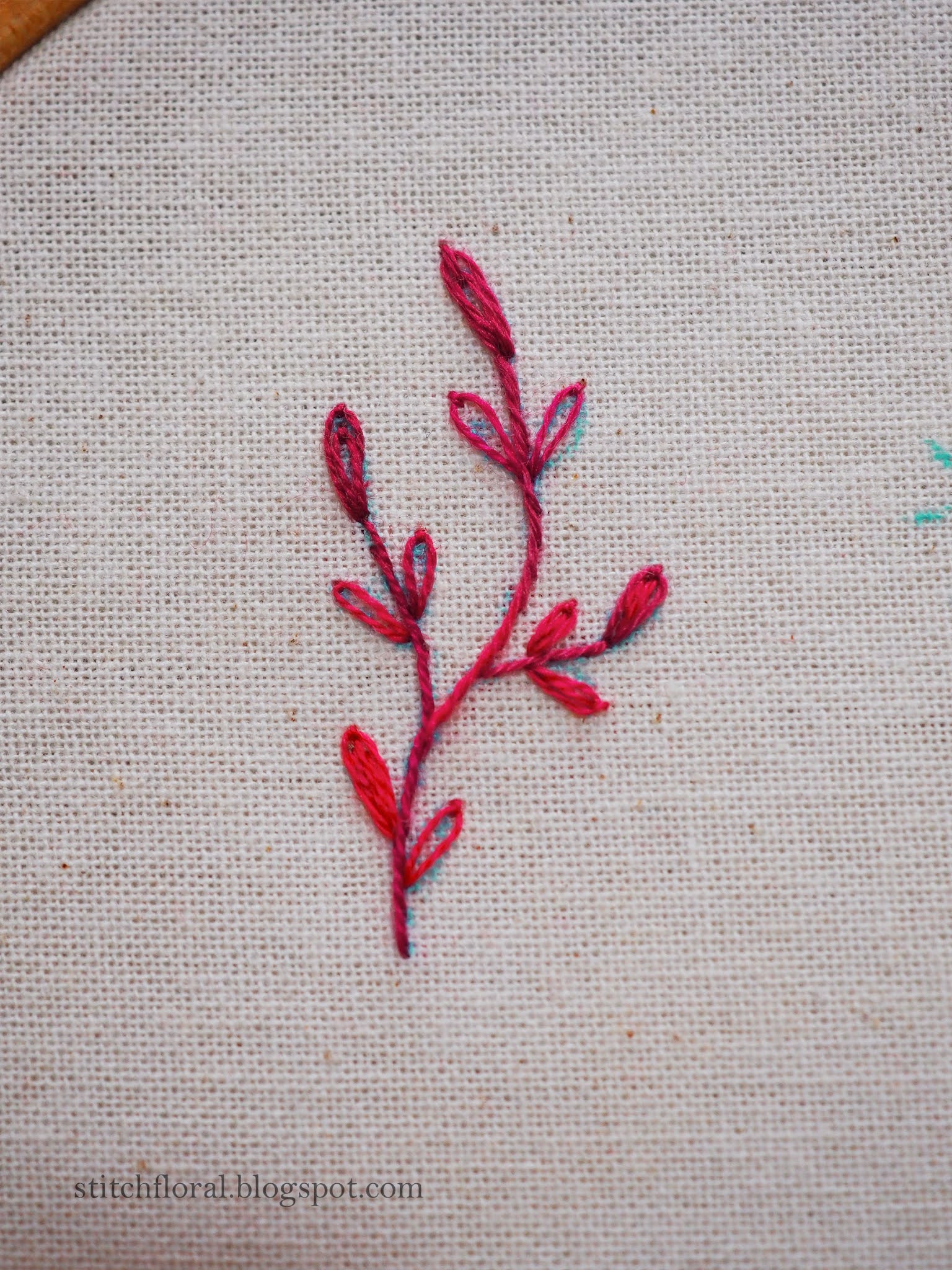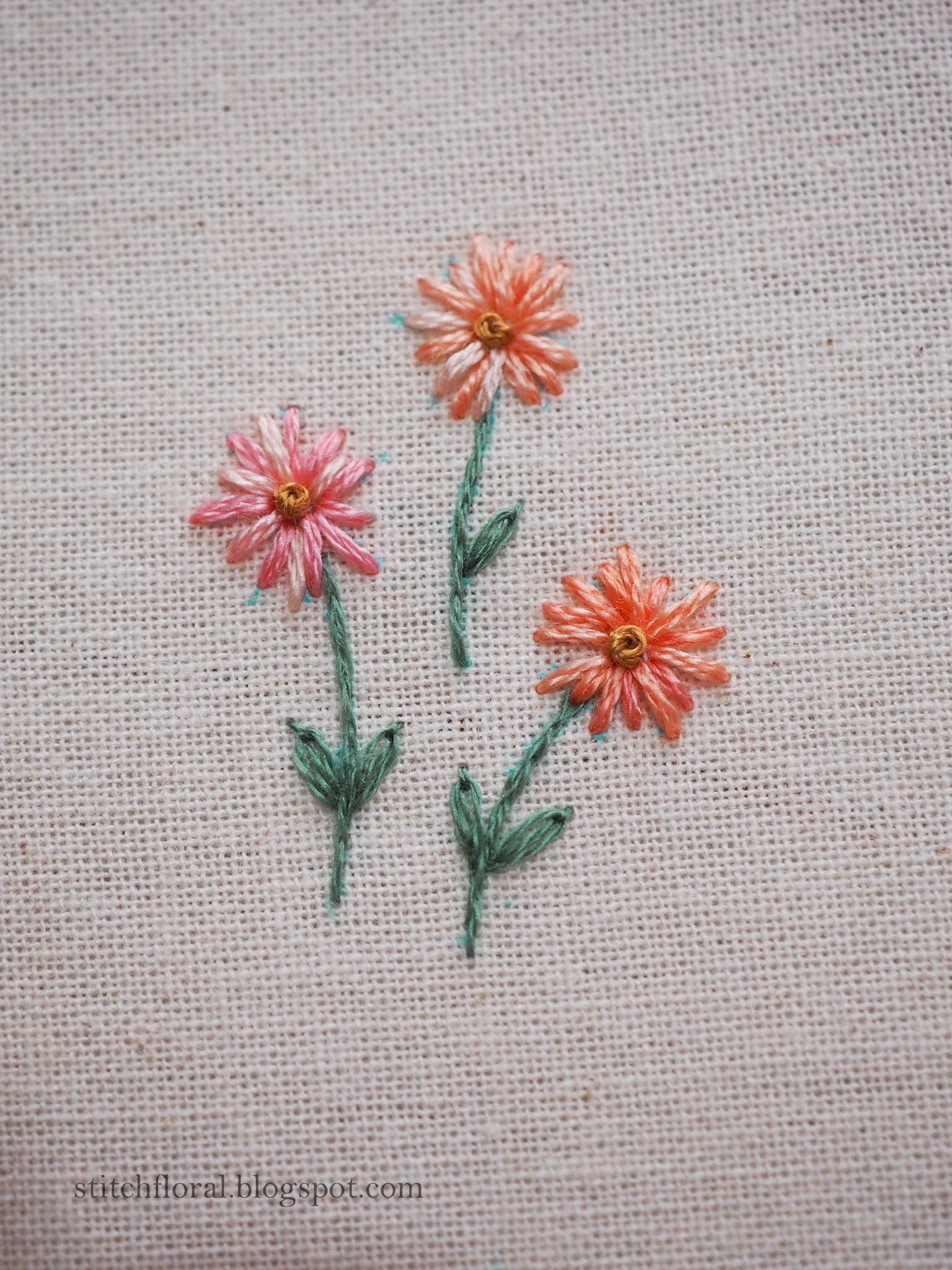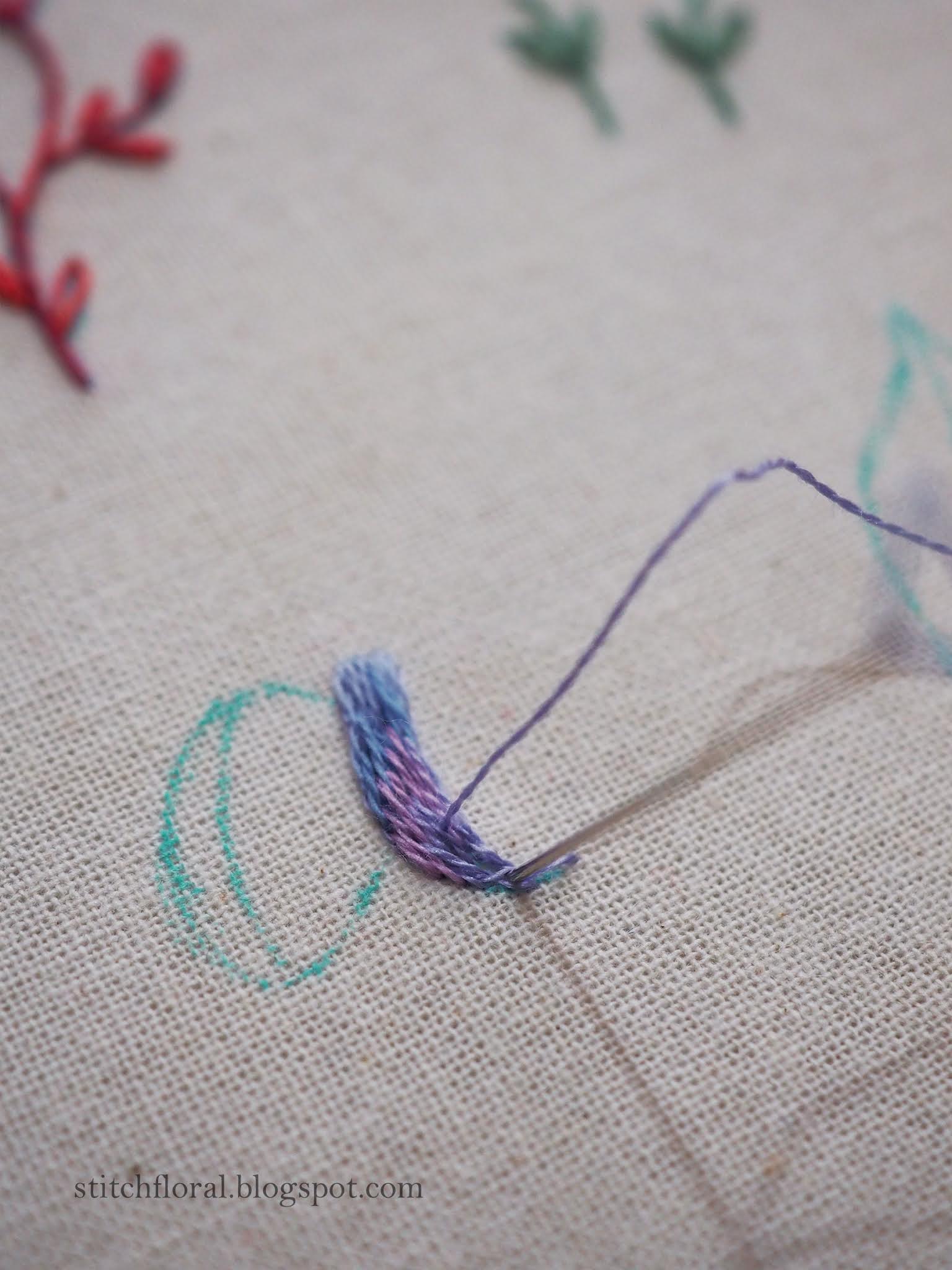Recently, I asked you on Instagram what topics you would like to be covered in the new blogposts and one of the replies was about variegated thread. So here are some tips that, hopefully, you will find useful!
What is variegated thread?
Variegated thread is usually dyed in more than one color: sometimes it's a palette of contrasting hues, sometimes they can be very close to each other and have only subtly differences, sometimes they can go from darker to lighter shades and tints.
In the picture below the colors of thread vary from darker burgundy to red, to purple-ish but because they are all close in their “temperature” the transition is quite subtle.
So let's take a look at the four scenarios where you can use it. If you have more suggestions, be sure to mention them in the comments below!
How to use variegated thread?
1. Continuous pattern
I suppose that is the most straightforward option.
If you have a continuous monotonous motif then one of the ways to add a bit of interest to it is to work it with variegathed thread. Be careful to not overload it, though! Work it on a plain colored fabric, better a contrasting one, that will help the thread pop up.
I would also recommend to use it with simple, minimalistic motifs. But you could say, that's just my taste, so don't take it as a rule.
2. Color variety in smaller elements
You know how some patterns have an array of smaller elements? Think of a bouquet where the focus is on bigger flowers but there are some tiny ones scattered around to add to the mood.
If you want to make these smaller scale elements look unique, each with their own character, then using variegated thread is the way to do that! It will allow you to work all of the elements in slightly different shades without ending and restarting thread every time.
These three flowers in the pictures above are similar yet unique – each one has a different palette but they still look cohesive together. That's because they are worked with variegated thread :)
3. Lettering
Another great way to use variegated thread is to work some lettering with it!
Transitions of colors in texts always look way too appealing to look past. If you peep at some lettering Instagram accounts, you will find lots of inspiration to make the text even more beautiful.
Almost everything that can be done on paper, can be done on fabric as well: you can add a shade with a darker color of thread, or you can add highlights, or outline, a touch of golden thread perhaps? You can also combine the “variegated” lettering with texts in plain color, to make the colorful one pop up even more.
So many possibilities!
4. Easy shading imitation
Some variegated threads just beg to be used in needlepainting!
Especially the ones that go from stronger color to a lighter one (although there are exceptions!). Instead of switching to a new color each time, why don't you try working the long and short stitching in variegated thread?
There are at least 3 shades of blue in this leaf and I didn't switch my thread a single time!
And if you want to add more contrast to the element, and complete your shading, just add some darker colors or highlights, like I did with this leaf.
So, here are the four easy scenarios on how to take advantage of your variegated thread. Let me add just a couple more examples from my own works!
Some of the petals in this flower are worked in variegated thread, others are worked in thread matching the palette of the variegated one.
The front petals of this flower are also worked in variegated thread! Look how well it imitates shading technique while there is only one kind of thread involved. I combined it with a darker color at the bottom and lighter thread on the top :)
What about you? How do you use variegated thread in your embroidery?

























Thank you for sharing your knowledge here. I love using variegated threads. I especially like the lettering you illustrated here.
ReplyDeleteI totally want to do some variegated lettering practice using the ideas I mentioned!
DeleteI have several veriegated threads in my statsh that have never been used, mainly because I was unsure how they would work within a design. This is a very useful and informative article, so thank you Amina, not only for this but for all your inspirational posts.
ReplyDeleteAnn Jarvis
Thank you for reading, Ann!
DeleteLooks fabulous whats the background fabric ??
ReplyDeleteThank you, the fabric for the examples is quilting bomulle!
DeleteGet an amazing flower online for your loved ones. 1800giftportal offers same day online flower delivery worldwide. flowers delivery
ReplyDeletesend flowers to usa
Nyc
ReplyDeleteFantastic blog for embroidery lover it will surely develop our skill in embroidery really informative.
ReplyDeleteSuper
ReplyDeleteWonderful content as always. I love how you talk about the projects and topics in detail. Keep the articles coming.
ReplyDeletegreat idea..
ReplyDeleteComfortabl y, the post is really the freshest on that laudable topic. I match in with your conclusions and definitely will thirstily look forward to your next updates. Simply just saying thanks can not simply be enough, for the fantasti c clarity in your writing. I can ideal away grab your rss feed to stay abreast of any updates. Good work and also much success in your business dealings! see it here
ReplyDeleteThank You for sharing this valuable information. loved it
ReplyDeletehttp://kahani-kavitablogspotcom.blogspot.com/
ReplyDelete
ReplyDeleteबुलबुल / हरिवंशराय बच्चन- Harivansh Rai Bachchan
https://harivanshraibachchans.blogspot.com › ...
ReplyDeleteस्वच्छता अभियान ने सरकारी स्कूलों में कार्यरत शिक्षकों की दिक्कतें बढ़ा दी ...
https://teacherharyana.blogspot.com › ...
सूरदास जी के दोहेंः- surdas ke dohe in hindi | amrit-vani - अमृत-वाणी site:https://amrit-vani.blogspot.com › sur...
ReplyDelete